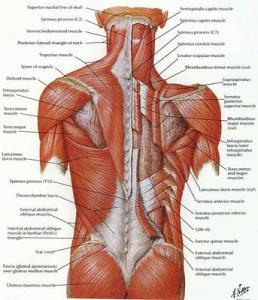How do physical therapists diagnose and treat lower back pain?
Lower back pain is one of the most common conditions physical therapists treat, and far too often that back pain has been chronic for years before a patient seeks out therapy. Many factors can contribute to lower back pain. In order to treat the pain effectively, the physical therapist performs musculoskeletal tests and compares symptoms to determine factor or factors causing the pain. Treatment in physical therapy cannot be “one-size-fits-all;” rather, a therapist designs a treatment plan based on the particular causes of pain.
What causes lower back pain?
Lower back pain can be the result of a traumatic injury or accident or a lingering effect of surgery. Scar tissue or irritation can limit strength and mobility and present as pain. More often, however, lower back pain develops over time due to lifestyle activities like poor posture, spending too much time in a singular position, or the wear and tear of repetitive movements in sports and physical activity. Aging and degenerative issues also cause back pain. Our body adapts both structurally and functionally, leading to pain and discomfort.
(as you can see, there is a lot going on here.)
So how do physical therapists figure out the cause of your lower back pain?
Physical therapists are movement experts who can identify abnormal movements that cause pain or are the result of pain, and then work to fix them. Physical therapists rely on a variety of measures to learn about your pain.
1. They listen to your history.
Your physical therapist will take into account your prior injuries, surgeries, or activities. For example, if you have been in a car accident, even many years ago, it can indicate the presence of scar tissue or adaptations in structure that will affect your treatment plan. Sports and physical activity may involve extremely challenging movements or strength imbalances that are exacerbating your pain, and that knowledge can guide a therapist’s evaluation.
2. They know what to ask.
When you come to a physical therapist, they will ask you what makes your pain better, and what makes your pain worse. Your answers are crucial in determining the cause of your pain, but sometimes it’s hard to remember the exact moments when you felt relief or a particularly intense twinge of pain. Physical therapists can get to the bottom of it anyways.
Does the pain feel like it stays in one place, or does it feel like it’s travelling? Often you may experience referred pain. Pain is perceived in one area but caused in another. Because nerves originate from the spine, you might feel pain in your leg when the real issue is irritation of the nerve root located by the vertebrae. Even though pain is felt in the leg, treating the back is the key to resolving the pain. The location of the referred pain can also tell the therapist which vertebra or joint is affected.
Is the pain worse in the morning or the evening? Depending on the position you sleep in, you may keep your back in one position all night long. For example, if your pain is worse in the morning and gradually improves, your therapist can tell that your pain is caused by spending too much time in flexion, and when you wake up and get out of bed, your pain lessens.
(this woman is resting with her back in flexion)
3. They know what to look for.
After your physical therapist talks to you about your experience, they will likely instruct you through a series of movements so they can evaluate objectively how your body is moving. They may have you bend forward and backward or twist towards the left or right. They might have you do the movement several times to see if repeated motion recreates your pain when one motion doesn’t. Your therapist will be able to see that you have reduced range of motion or prefer a certain position and lean one way unknowingly.
4. They know what to test.
All the nerves that allow us to feel, move, and experience pain, originate from the spinal cord, enclosed by the vertebral column.When the vertebrae themselves or the protective discs between them are misaligned or unhealthy, the nerve function is compromised. The nerves separate from the spinal column at various locations along the spine and exit through spaces in between the vertebrae. These nerves are responsible for the brain’s control of movement, both voluntary (like walking) and involuntary (reflexes). Each nerve acts in a very specific location, so by testing that spot, a physical therapist can get information about what’s happening at the spinal level. If a muscle is significantly weak or reduced in size, it is a sign that the nerve controlling this muscle is not working properly. Your therapist will test muscle strength and diminished reflexes to determine the vertebrae affected.
5. They rule out other diagnoses
While therapists find what is causing your pain, they eliminate other possible causes. There is growing evidence that medical imaging like MRIs don’t necessarily reflect the pain you experience. Some abnormalities like disc degeneration or slipping can be asymptomatic. Physical therapists evaluate your functional capacity, rather than relying exclusively on images that may be misleading. This can save you from other interventions like medication or surgery that may not fix your pain.
Physical therapists have an arsenal of tools and knowledge to diagnose your pain and then work with you to fix the cause. Low back pain may be common, but it is not normal or necessary to live with it! If you deal with lower back pain, be sure to see a physical therapist who can hone in on your individual pain.
How do physical therapists diagnose and treat lower back pain?
Lower back pain is one of the most common conditions physical therapists treat, and far too often that back pain has been chronic for years before a patient seeks out therapy. Many factors can contribute to lower back pain. In order to treat the pain effectively, the physical therapist performs musculoskeletal tests and compares symptoms to determine factor or factors causing the pain. Treatment in physical therapy cannot be “one-size-fits-all;” rather, a therapist designs a treatment plan based on the particular causes of pain.
What causes lower back pain?
Lower back pain can be the result of a traumatic injury or accident or a lingering effect of surgery. Scar tissue or irritation can limit strength and mobility and present as pain. More often, however, lower back pain develops over time due to lifestyle activities like poor posture, spending too much time in a singular position, or the wear and tear of repetitive movements in sports and physical activity. Aging and degenerative issues also cause back pain. Our body adapts both structurally and functionally, leading to pain and discomfort.
(as you can see, there is a lot going on here.)
So how do physical therapists figure out the cause of your lower back pain?
Physical therapists are movement experts who can identify abnormal movements that cause pain or are the result of pain, and then work to fix them. Physical therapists rely on a variety of measures to learn about your pain.
1. They listen to your history.
Your physical therapist will take into account your prior injuries, surgeries, or activities. For example, if you have been in a car accident, even many years ago, it can indicate the presence of scar tissue or adaptations in structure that will affect your treatment plan. Sports and physical activity may involve extremely challenging movements or strength imbalances that are exacerbating your pain, and that knowledge can guide a therapist’s evaluation.
2. They know what to ask.
When you come to a physical therapist, they will ask you what makes your pain better, and what makes your pain worse. Your answers are crucial in determining the cause of your pain, but sometimes it’s hard to remember the exact moments when you felt relief or a particularly intense twinge of pain. Physical therapists can get to the bottom of it anyways.
Does the pain feel like it stays in one place, or does it feel like it’s travelling? Often you may experience referred pain. Pain is perceived in one area but caused in another. Because nerves originate from the spine, you might feel pain in your leg when the real issue is irritation of the nerve root located by the vertebrae. Even though pain is felt in the leg, treating the back is the key to resolving the pain. The location of the referred pain can also tell the therapist which vertebra or joint is affected.
Is the pain worse in the morning or the evening? Depending on the position you sleep in, you may keep your back in one position all night long. For example, if your pain is worse in the morning and gradually improves, your therapist can tell that your pain is caused by spending too much time in flexion, and when you wake up and get out of bed, your pain lessens.
(this woman is resting with her back in flexion)
3. They know what to look for.
After your physical therapist talks to you about your experience, they will likely instruct you through a series of movements so they can evaluate objectively how your body is moving. They may have you bend forward and backward or twist towards the left or right. They might have you do the movement several times to see if repeated motion recreates your pain when one motion doesn’t. Your therapist will be able to see that you have reduced range of motion or prefer a certain position and lean one way unknowingly.
4. They know what to test.
All the nerves that allow us to feel, move, and experience pain, originate from the spinal cord, enclosed by the vertebral column.When the vertebrae themselves or the protective discs between them are misaligned or unhealthy, the nerve function is compromised. The nerves separate from the spinal column at various locations along the spine and exit through spaces in between the vertebrae. These nerves are responsible for the brain’s control of movement, both voluntary (like walking) and involuntary (reflexes). Each nerve acts in a very specific location, so by testing that spot, a physical therapist can get information about what’s happening at the spinal level. If a muscle is significantly weak or reduced in size, it is a sign that the nerve controlling this muscle is not working properly. Your therapist will test muscle strength and diminished reflexes to determine the vertebrae affected.
5. They rule out other diagnoses
While therapists find what is causing your pain, they eliminate other possible causes. There is growing evidence that medical imaging like MRIs don’t necessarily reflect the pain you experience. Some abnormalities like disc degeneration or slipping can be asymptomatic. Physical therapists evaluate your functional capacity, rather than relying exclusively on images that may be misleading. This can save you from other interventions like medication or surgery that may not fix your pain.
Physical therapists have an arsenal of tools and knowledge to diagnose your pain and then work with you to fix the cause. Low back pain may be common, but it is not normal or necessary to live with it! If you deal with lower back pain, be sure to see a physical therapist who can hone in on your individual pain.

